Indirect sunlight is the strength of the leftover rays that reach a plant after passing through or becoming filtered by something. This can include shear curtains and shade caused by trees or other plants. Even tinted glasses can significantly dampen sunlight.
Tomatoes are often cultivated for their versatility and ease of growth. However, the type and amount of sunlight they receive will determine their overall production.
So, can tomatoes grow in indirect sunlight?
Well, technically tomatoes can grow in indirect sunlight. However, getting proper sunlight is important for tomatoes because, without it, they will grow leggy as they try to reach for the light they crave.
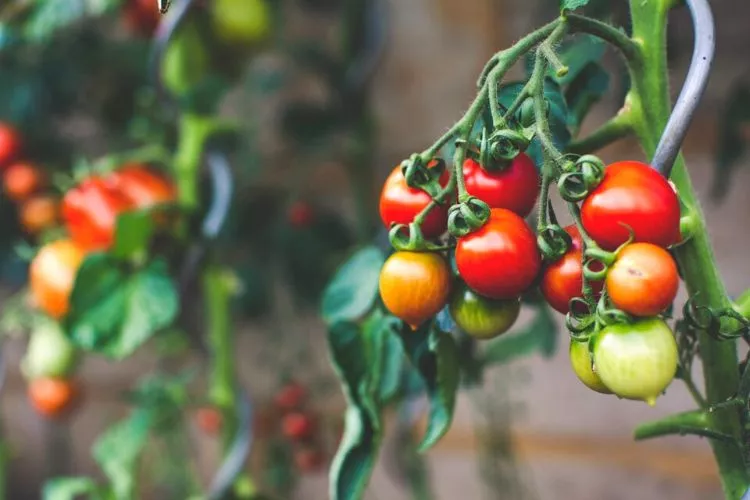
This will see them produce less fruit as they focus their energy on forming a structure. Additionally, the fruits won’t be able to grow to full size, and even if they do, their form can be restricted.
This article will go through all the ins and outs of growing tomatoes under indirect sunlight.
Table of Contents
How Much Sunlight Do Tomatoes Require?
Tomatoes need at least 6-8 hours of direct light. Growing them somewhere where the amount of sunlight doesn’t meet their demands can mean the difference between failing to produce what can usually be an abundance of their diverse goodness.
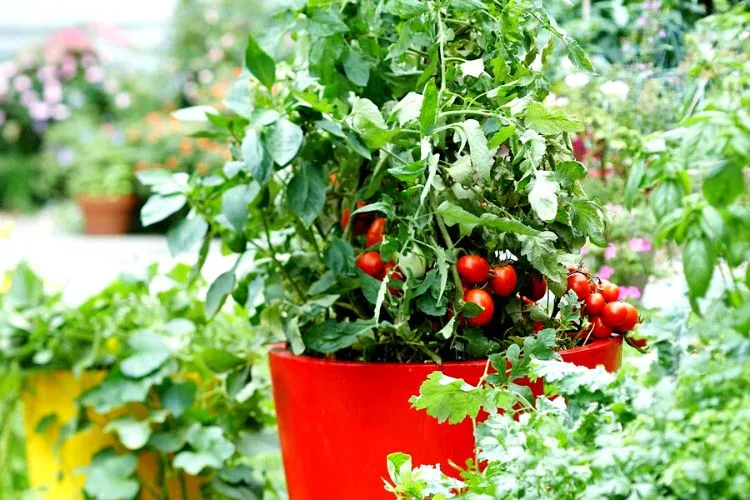
A lack of sun will force the plant to focus its energy on stretching toward the light as it struggles to convert its diminishing sunlight stores into usable energy.
As a result, this stretching process almost halts the growing production and restricts their forming ability. Some plants can thrive well without sunlight, but tomatoes are not one of those.
Can tomatoes grow in indirect sunlight?
Technically, it is possible to grow tomatoes with indirect sunlight. However, this light won’t enable them to grow to their full potential. A lack of sunshine or sunshine that is obtained indirectly will pretty much stunt their growth.
Tomatoes need lots of sunlight so that the fruits can fully mature.
They require at least 6-8 hours of full sunlight per day to allow the process to run its course effectively. Depending on the location, some tomatoes are best grown in direct sunlight during the morning sun hours and recover in the shade during the afternoon.
Plants need sunlight as they transform it into usable energy via photosynthesis. They use this energy to not only grow strong and stable but also to bloom and produce fruit. There is much debate surrounding whether or not direct sunlight is needed to ripen tomatoes, but it has been proven not to be the case.
When tomatoes are exposed to an excess amount of direct sunlight and heat, their ripening process can become inhibited, and the fruits can even become scalded by the sun.
How to maximize tomato growth in indirect sunlight?
If you already have your garden setup or are planning a garden where your tomatoes cannot be exposed to an adequate amount of direct sunlight, you can use a few hacks to help maximize their growth.
Let’s have a look at them in some detail.
Choose the right location for your tomato plants
Try to plant your tomatoes where other plants, bushes, shrubs, trees, walls, laneways, or other structures cause minimal shading. If you have the space, plant them out in the middle of your garden area to maximize their sunlight exposure.
Choosing the right tomato variety for indirect sunlight
If sunlight access is going to be a problem for your tomato production, some varieties are more shade tolerant than others. These types will allow you to be a little looser when planning your overall garden space. These include:
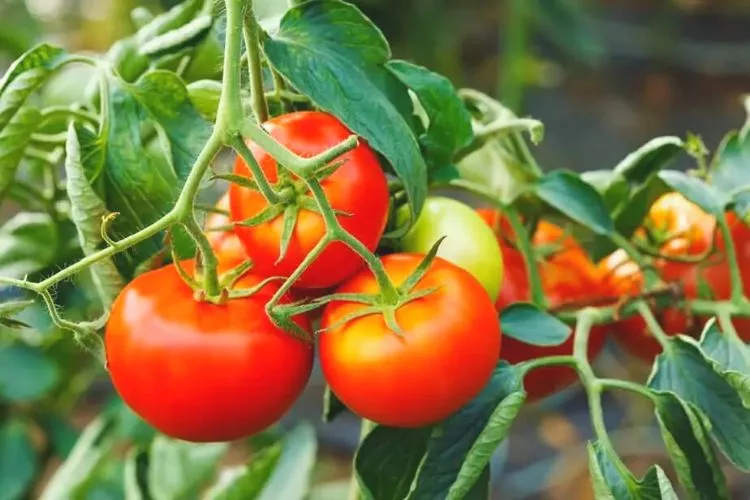
- Beauty.
- Black Cherry.
- Black Krim.
- Cherokee Purple.
- Early Wonder.
- Golden Sweet.
- Gold Medal.
- Ildi.
- Mama Leone.
- Paul Robeson.
- Roma.
- San Marzano.
- Siberia.
Providing additional artificial light
In this day and age, it’s becoming increasingly popular to use artificial lighting to replicate the sun’s workload, especially in dwellings such as apartments and townhouses, where the lack of space and windows can be a problem.
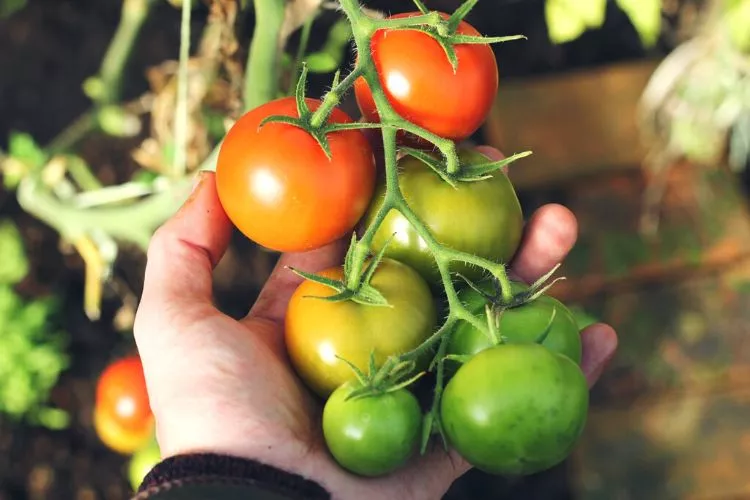
There is a huge range of different sizes and forms of artificial lighting to suit all budgets. From incandescent to fluorescent and even LEDs, the choices are endless.
Using reflective materials to increase light exposure
Planting them somewhere where light may be able to reflect can help them. Painting walls or fences white is a great option, as the color white is highly reflective. There are even paints specifically designed to use in such a way that they help bounce the light in all different directions.
You can also add mirrors or cover walls and boards with aluminum foil to help the light reflect around. Surprisingly, adding small bodies of water such as ponds or water features is another great technique for light reflection.
Proper watering and fertilization techniques
Tomato plants don’t rely too much on excess water or fertilization. However, they do need a balanced amount. This will ensure they have all the right ingredients to build enough strength to soak in as much sun as possible.
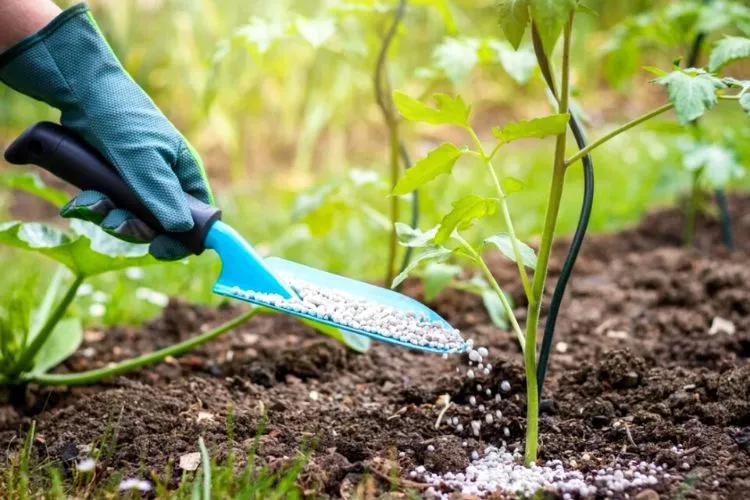
Tomato plants generally need around 1-2 inches of water once per week. Their soil should be moist but not soaking. A 10-10-10 or 12-12-12 fertilizer blend is ideal for all stages of tomato growth.
Factors to consider when growing tomatoes in indirect sunlight
Raising tomatoes in an environment where there is a lack of sunlight can ultimately hinder their ability to grow. If doing so is your only option, a few minor considerations should be considered to ensure that no other problems arise.
These can include shading caused by overgrowth, root rot, pest infestation, etc. Let’s have a look at these considerations in a little more detail.
Soil preparation and fertilization
Tomato plants need good quality soil that contains organic matter such as aged compost or rotting manure. We recommend working around 2-3 inches of organic matter into the top 6 inches of your tomato garden bed.
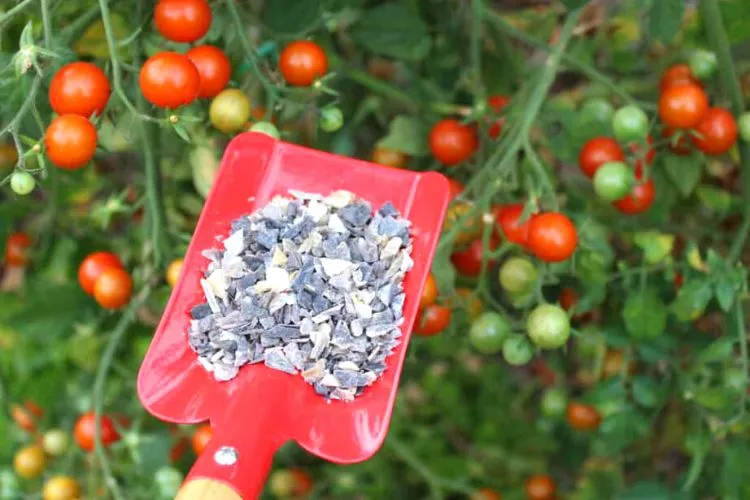
This is a good depth for the roots to establish themselves without having to feel their way around large rocks and debris under the surface. You can also make your quality soil blend by adding the following:
- 1 bushel (around 35 L) of vermiculite and peat moss.
- 1 ¼ cups of dolomitic lime.
- ½ cup of 20 percent superphosphate.
- 1 cup of 5-10-5 fertilizer.
This can be worked into the soil in the same way as compost or manure. It can even be added to it for extra nutrients. Fertilizer can be used soon after planting and just before fruiting. A balanced 10-10-10 or 12-12-12 blend is ideal for both growing stages.
Watering and humidity
Tomatoes don’t need extra watering when exposed to less than the required sunlight. They can be watered once weekly at around 1-2 inches deep. Avoid over watering as the excess water can pool around the roots and drown them, which causes root rot.
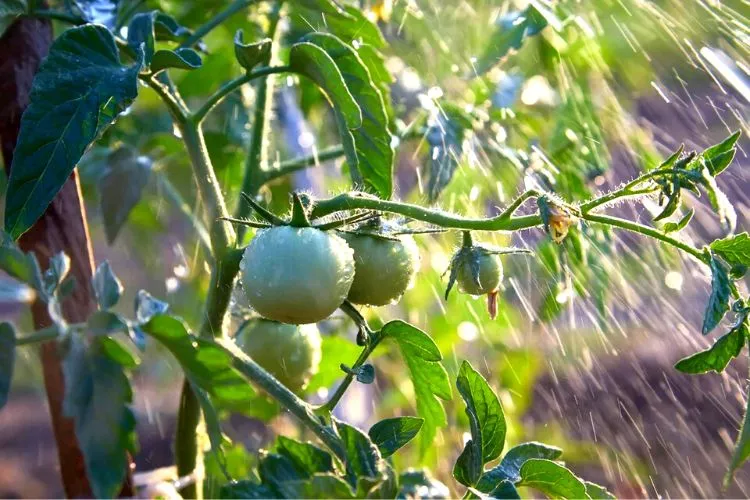
Furthermore, poor soil quality will trap the water even more, which can amplify the problem. Tomatoes need well draining soil with adequate aeration to ensure that the water can do what it needs to do and then drain out easily.
Tomatoes require a relative humidity of around 65-85%. Any more will hinder the ability of pollen release, which prevents the overall growth of the tomato. Furthermore, fruit and flower abortion can be significantly increased with higher humidities.
Pruning and staking
The main purpose of pruning tomato plants is to prevent pests from climbing onto lower lying leaves and infecting the whole plant. This issue occurs mostly when decaying or dead foliage is left hanging on by a thread, and several little nasties latch on to this new found food source.
Therefore, pruning any of these problem limbs is extremely important for the plant’s overall safety.
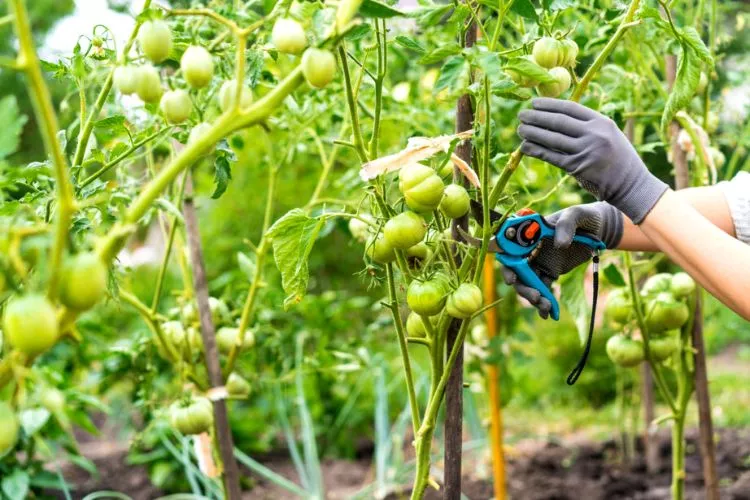
Staking is a practice used to help stabilize the plant as it grows. It helps the plant grow upward and prevents it from hanging, which can invite unwanted pests. There are several methods, such as single staking, double staking, caging, Florida weaving, etc.
The main thing to think about when either pruning or staking is to allow as much air circulation as possible to prevent mold from forming and pests from being attracted to the scent of rotting plants caused by humidity.
Pest and disease management
Several pests enjoy a struggling or weakened tomato plant. These include aphids, cutworms, whiteflies, spider mites, and flea beetles.
They generally don’t attack the plant unless it is suffering from a disease such as a root rot or they have access to the plant via lower hanging foliage or feeding on rotting fruits. This is why pruning and removing any ‘failed’ fruits is essential.
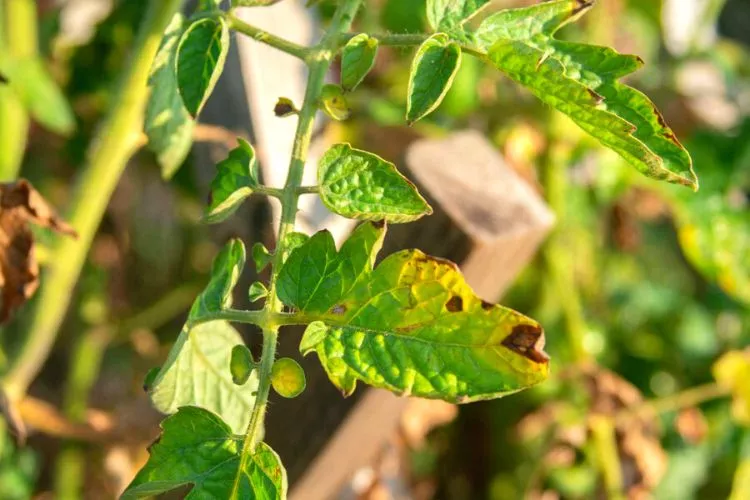
The most common diseases affecting a tomato plant are Black Mold, Botrytis Gray Mold, Early Blight, Powdery Mildew, and Root Rot. Most of these issues arise when the humidity is too high, or an excess of water suffocates the roots.
The best way to counter these problems is by preparing the soil with adequate air circulation and spacing the plants so that high humidity don’t become uncontrollable.
Can Tomatoes Be Grown In Shade?
Tomato plants thrive best in direct sunlight, so growing them in the shade can come with a few problems. However, if you can place them somewhere where they can receive reflected or artificial light, they will definitely have a better chance of survival.
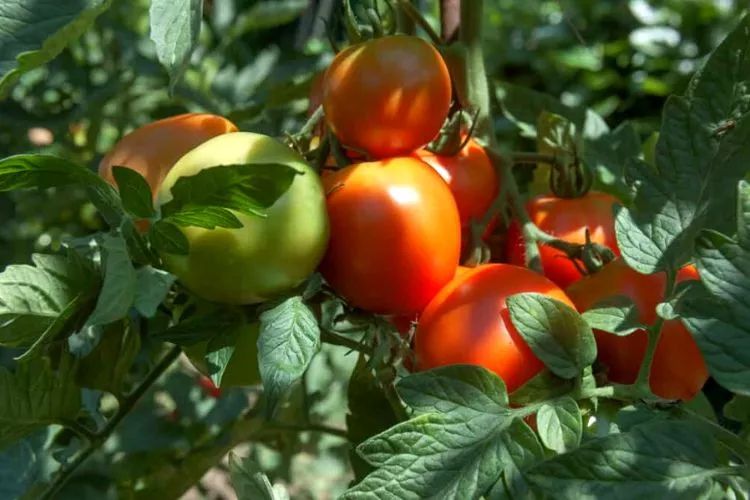
Using mirrors, water, or brightly colored paints can help to redirect any light onto your plants. It’s quite difficult to avoid shading if the plants are already in place,, but another hack worth trying is to prune back any obstructing canopy growth to allow as much sunlight as possible.
Otherwise, installing some lights to help simulate the sun may be the only other option. Growing tomatoes in the shade will only stunt growth and restrict the plants’ ability to form fruit.
List of Tomato Varieties That Are Shade Tolerant
Sometimes the only option is to grow our garden under less than optimal conditions. This includes areas that lack adequate sun or have sunlight, but another object filters it out. If this is the case,, some tomato varieties are slightly more tolerant to shaded conditions.
The common theme for any tomato variant to thrive in shady conditions is its size at maturity. Smaller types take a shorter amount of time to grow and ripen. Therefore, they need less sun at the beginning and end of their growing cycle.
It’s not that they don’t require any sunlight; it’s more so that they can still produce a decent yield without the full direct sun required to grow traditional sized tomatoes. The most common types include:
Grape, pear, and cherry tomatoes
Due to the smaller size of these tomato variants, they can generally thrive pretty well under shady conditions. They are commonly grown on patios and apartment balconies.
They require a much smaller footprint and can grow upwards relatively easily. The names of each variant correspond to their shape, although they are around 1-2 inches in diameter.
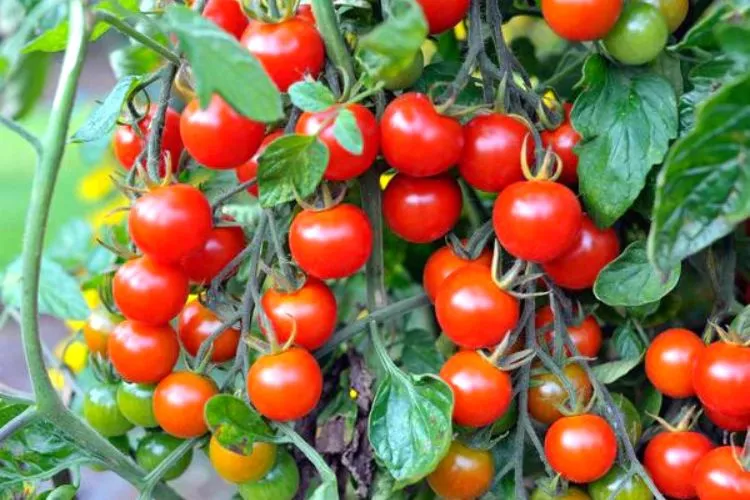
They tend to fruit much quicker than traditional sized tomatoes, which is why they can fruit and ripen with minimal amounts of direct sunlight.
Plum tomatoes
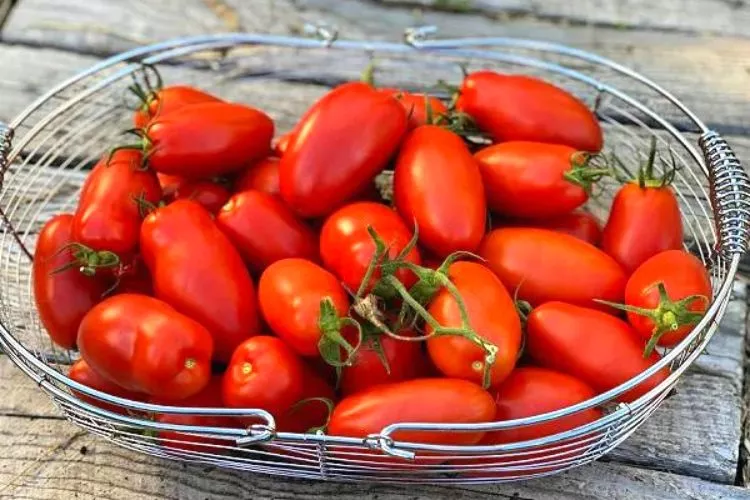
Plum tomatoes are known for their use within the sauce and packing industry. They are grown to be crushed, diced, blended, etc.
Therefore, they don’t require the same amount of sunlight to grow and ripen them. The taste is slightly less sharp and sweet, and the texture isn’t as firm as traditional tomatoes.
Growing them in areas that are slightly shaded during certain periods of the day can still produce a decent yield.
German heirloom ‘Blondkopfchen tomatoes
Another short time growing variant. This variant takes around 75 days and usually doesn’t mind alternating sun to shade conditions. However, they still require some sun to allow initial growth and stability.
The success of these beautiful yellow tomatoes is due to their smaller size and multi vine spread of growth.
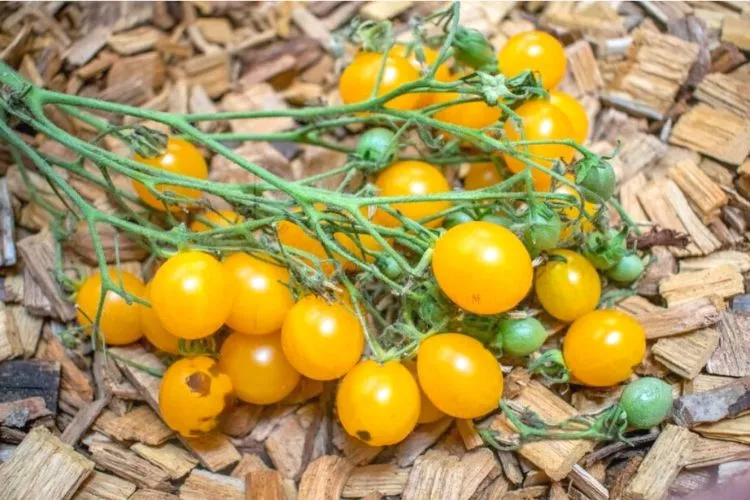
Black cherry tomatoes
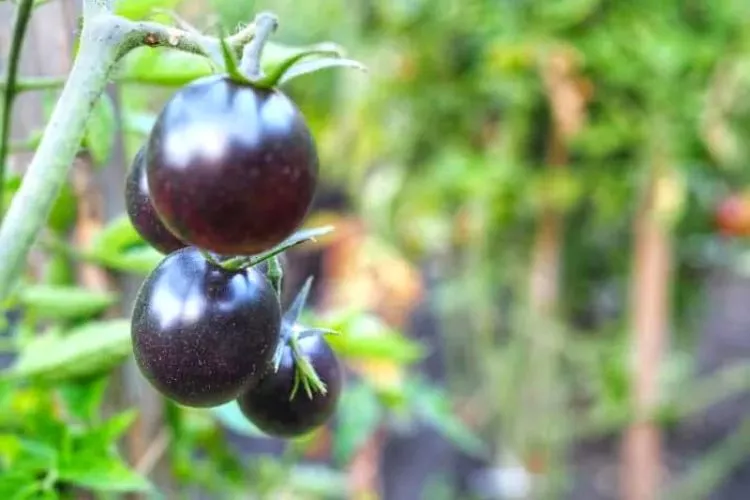
This variant of tomato is known for its disease-resistant capabilities and short growth period of between 65-75 days. These reasons alone make them an ideal choice for compact living.
Like cherry tomatoes, their small size allows them to grow and ripen with minimal sunlight exposure.
Roma Tomato
This variant takes longer to mature and grows in larger clusters, making them ideal for growing in shadier conditions. Roma tomatoes are generally grown for the production of pastes and sauces.
They don’t require full sun to amplify their growing process like the more traditional types. Roma tomatoes ripen in a short sharp burst as opposed to gradually.
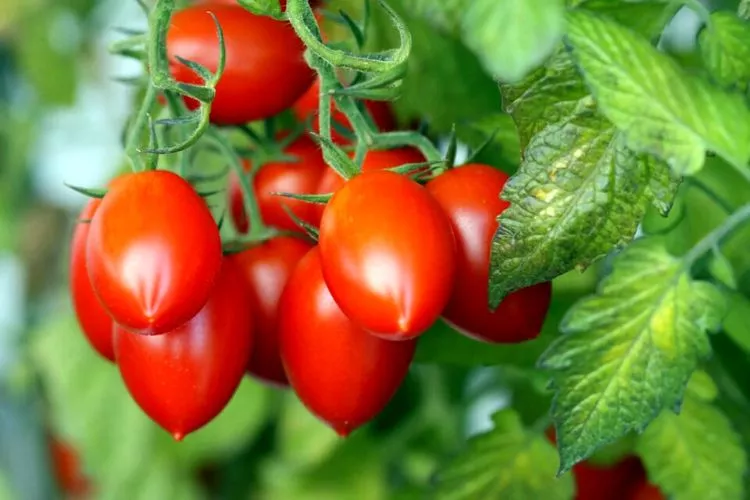
Therefore, they only really need the bulk of their sun exposure during their ripening period.
Frequently Asked Questions (FAQs)
Can Tomatoes Grow Without Any Sunlight?
All plants, including tomatoes,, convert sunlight into the energy required to grow and form the plant and its fruit. However, some varieties are slightly more shade tolerant. They could only grow without sunlight by using artificial lighting to simulate the sun. Otherwise, they would not have the energy to grow, let alone produce quality fruit.
Will tomatoes grow in 4 hours of sun?
Most tomato variants need at least 6-8 hours per day of direct sunlight to grow and fruit. If they are only exposed for 4 hours, they will become leggy and underdeveloped. Some smaller types, such as cherry, Roma, and plum, can be slightly less dependent on the sun’s rays. However, they do need some to ensure the process can run smoothly and that fruits can grow and ripen.
Can tomatoes grow in 6 hours of sun?
6 hours of direct sunlight is the minimal amount that the average tomato plant should receive to ensure optimal growth. Any less than 6 hours will stunt its growth and reduce its chances of becoming a reliable fruiting plant. Growing them with indirect sunlight is not recommended as the growth simply will not be as full or plentiful.
Conclusion:
Tomatoes need 6-8 hours of direct sunlight per day to ensure that they can grow to their full potential. Any less will produce a leggy plant, and overall stunting will occur.
When a plant becomes leggy, it stops focusing on fruiting as it struggles to stretch toward its light source.
With all its energy focused on obtaining light, the rest of the plant simply lags and becomes useless. The only way to ensure your tomato plants thrive with indirect sunlight is if they are completely unhindered by anything else, such as buildings, bushes, trees, etc.
Adding reflective surfaces such as mirrors, water, white walls, etc., can help distribute more light if needed. We hope that this guide has been helpful.
You can read about similar topics here on our website. Check back again soon for more.


